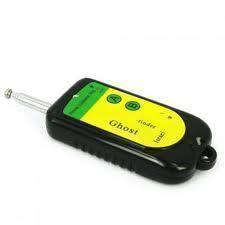How Bug Detectors Work
A bug detector is a device that is able to locate and/or disable electronic spy equipment such as microphones, cameras, and GPS tracking devices. Law enforcement agencies, military counter-intelligence agencies, criminals, and everyday individuals who are suspicious of being overheard often use bug detectors. Bug detectors are usually small, portable, and have multiple display functions to alert the user to a “bug.”
How Bug Detectors Work
A bug detector is essentially a radio receiver that is able to pick up electromagnetic signals that are broadcasted from an electronic device or specifically, a bug. Rather than converting these intercepted radio broadcasts into data or audio, the bug detector simply lights up and sounds an alarm whenever it receives a strong frequency. By moving a bug detector around to nearby objects, it is able to alert the user to hidden bugs.
Finding the Bugs
Fortunately, most radio frequency bugs are easily found. The signals that they transmit are fairly common and can be spotted by a simple device tuned to the frequency range that the offending bugs uses. Simply make sure all electronic products are turned off in the space you are checking and slowly walk around the room. If an offending radio frequency is operating in the room the device will pick it up and notify you.
Types of Bug Detectors
There are two main types of spying technology that most people who are being spied on come in contact with, video and audio. In either case, the devices that are being used operate on a radio frequency (RF) system. The technology to operate and construct these devices is fairly simple and has resulted in “bugs” that are no bigger then a penny. They use a lower range of RF, between 1-3 MHz which is generally on par with that of a garage door opener. Unfortunately, because their size is so small, they can be placed almost anywhere to capture their intended information. In some instances, like a phone conversation, they do not even need to be place on or in the phone. They only need to be placed near the phone.
Audio Bug Detectors
Audio bug detectors are used to detect the presence of audio recording equipment such as phone taps or “wires.” Since these types of bugs are able to record everything that a target is saying, they can be detrimental to the target’s reputation and/or career. Audio bug detectors are able to detect the presence of audio bugs by detecting the radio frequencies that they transmit, which are usually in the 1-3 MHz range.

Video Bug Detectors
Like audio bugs, video bugs are able to capture everything the target is doing and can be placed anywhere in the target’s room. Although video bugs use a slightly higher radio frequency, usually in the 5-10 MHz range, they depend on radio frequencies to transmit the information they capture and video bug detectors can easily detect them.
GPS Bug Detectors
Unlike audio and video bugs, GPS and other location based bugs use a much higher range of radio frequencies in order to communicate with GPS satellites. As a result of this, GPS bug detectors must be able to detect high radio frequencies or even a variety of radio frequency ranges in order to detect GPS bugs. Additionally, GPS bug detectors run a much higher chance of other electronic devices confusing them than audio and video bug detectors because GPS frequencies are closer to common electronic devices such as power lines and radio broadcasts.


Comments - One Response to “How Bug Detectors Work”
Sorry but comments are closed at this time.